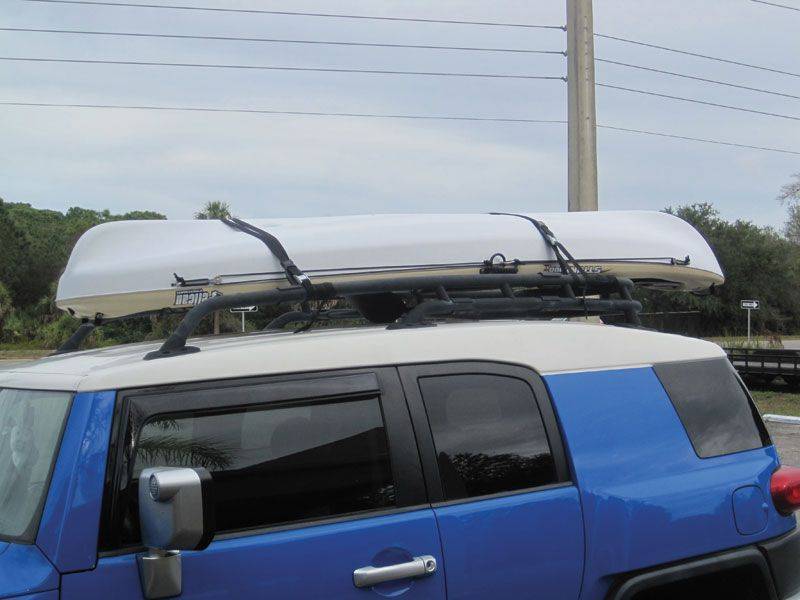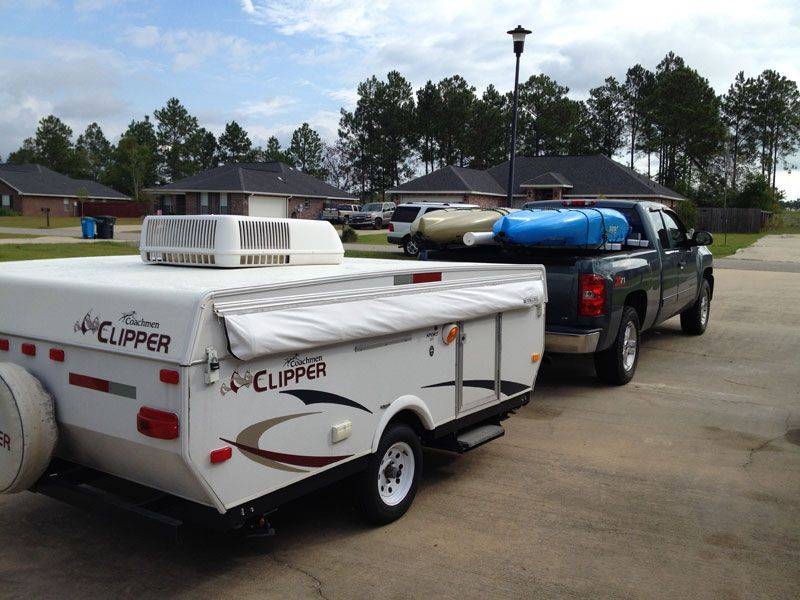[dropcap]Y[/dropcap]ou have purchased a kayak and are excited about getting it in the water but how are you going to transport your kayak. This question is often secondary in the process of obtaining a kayak. The type and size of your vehicle will be a major factor in the kayak purchase. A 14 foot fishing kayak will not carry well on a Smart Car! For those who own a pickup truck the answer is fairly simple. Put the kayak in the bed and strap it down. A short bed truck may require a bed extender, which fits onto a trailer hitch, and allows support for the kayak overhang. A truck rack is great for carry of your kayak and frees up the bed of the truck. Putting a kayak onto a truck rack typically requires two people to lift the kayak however it can be done by a single person using leverage and some thought.
Car roof racks are standard equipment on many vans and SUV’s however they may not be adequate to carry the weight of a kayak. Check with your vehicle manufacturer or the owner’s manual for load limits. Kayak cradles can be attached to most of these allowing for improved loading and securing your kayak. Roof racks are available from several manufacturers or car dealers and range in price from $35 – $600. The better rack system is one designed specifically to fit your vehicle. The ‘universal’ or ‘one size fits all’ type of racks are not designed for long distance travel. Roof racks are available that have built in rollers and some have lift assist systems, both make loading the kayak easier. The least expensive roof carry method is to use foam blocks or float noodles between the roof and the kayak, strapping the kayak down through the vehicle, for short distance travel.
Let’s talk about securing your kayak for transport. Using rope to tie down a kayak is the least expensive method. I have seen bailing twine and duct tape used to secure a kayak! I caution against these methods because even the best tied knots do not allow for flex and stretch in a rope. The next step up is a ratchet type strap. The down side to these are that the ratchet mechanism can fail and will rust and corrode over time. The most reliable tie down is a nylon cam buckle strap. These are easy to tighten and remove and they secure well. I recommend that if you are travelling any distance double strap your kayak and check the straps frequently. Vibration and strap stretch can cause them to loosen. A frightful sight is your kayak going 60 + MPH, end over end, in your rear view mirror. Trust me I know!
A kayak trailer can be purchased which is designed to carry as few as two or as many as twelve or more kayaks. A small flat bed trailer can be used, as well as a modified boat trailer. I have seen many inventive ways of transporting a kayak some of which are questionable at best. If you have made the investment in a kayak why not make it easy and secure to get it where you want to go without damaging it. As a note, equipment such as paddles, life jackets, cooler, tackle bags and other items not permanently attached to the kayak, should be removed and stored for transport.
I hope this provides some insight as to transporting your kayak. I recommend a visit to your local kayak store where assistance can be obtained and racks, straps and tie downs can be purchased. Safe and happy paddling.


